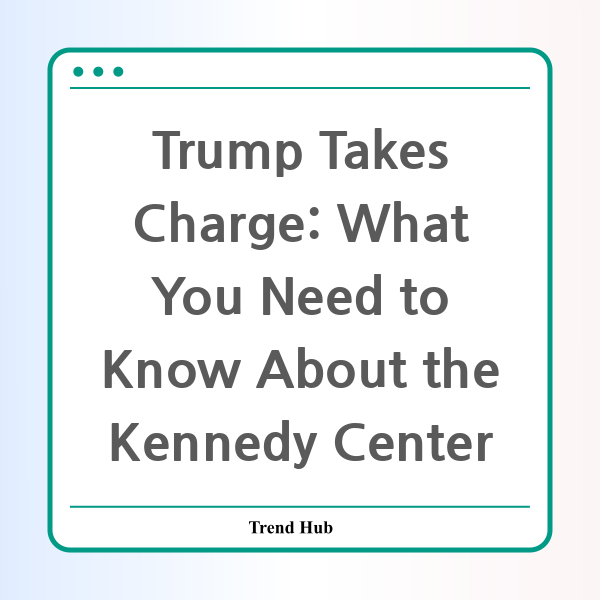* This website participates in the Amazon Affiliate Program and earns from qualifying purchases.

What does Donald Trump's new role mean for the Kennedy Center?
The Kennedy Center for the Performing Arts stands as a pivotal institution in American culture, known for its dedication to the performing arts and artistic excellence. As the recent news sweeps through the cultural landscape, Donald Trump’s election as the chair of the Kennedy Center has raised eyebrows and sparked discussion among artists, patrons, and the broader public. But what does this mean for one of the nation's premier arts venues?
The Kennedy Center, named after President John F. Kennedy, has always been more than a building of performances; it embodies the spirit of artistic expression and community engagement. With its expansive offerings, from ballet to opera, it has been a cornerstone of American culture since its opening in 1971.
Following the resignation of the center's president, Trump's unanimous election as chair signals a significant leadership shift. In a statement expressing his enthusiasm, Trump proclaimed that it was an honor to assume this influential role alongside an 'amazing Board of Trustees.' This board will play a crucial role in steering the center’s future direction and vision, especially amid discussions surrounding the center's impact on the arts community.
However, Trump's appointment isn’t without controversy. His recent comments criticizing the Kennedy Center for being 'woke' raised questions about his understanding of the cultural institution. Critics noted that his admission of not attending performances there casts doubt on his assessments of the shows. During a press interaction, when asked about the quality of the presentations, Trump acknowledged he hadn’t seen any shows, attributing his harsh critiques to reports he had received. This led to contrasting opinions, with supporters claiming he needn’t attend to form an opinion, while opponents argued that such uninformed judgments undermine the credibility of his new position.
Amidst this backdrop, the question arises: What should stakeholders—artists, patrons, and the general public—expect from Trump’s tenure? The expectations are manifold. Firstly, many hope for a renewed focus on artistic integrity and support for diverse expressions within the arts. The Kennedy Center has always championed a range of performances, catering to various tastes and communities. Secondly, the center must navigate the delicate balance between fostering creativity and addressing the criticisms that have emerged regarding its programming and representation.
To engage with these discussions, the Kennedy Center may consider initiatives that promote transparency and community involvement. Hosting open forums, curating a diverse range of performances, and maintaining a commitment to artistic excellence can help to redefine its direction under new leadership. With Trump at the helm, there may be calls for increased scrutiny over the types of productions staged at the iconic venue.
In Conclusion
Donald Trump's leadership at the Kennedy Center introduces a new chapter filled with potential challenges and opportunities. As he aims to reshape the center into a vibrant hub of culture and art, the ways in which he addresses criticism, embraces diversity within the arts, and ensures the longevity of the Kennedy Center’s legacy will be vital. For now, audiences and artists alike will be watching closely as this story unfolds, eager to see how Trump’s vision aligns with the storied history of the Kennedy Center.
* This website participates in the Amazon Affiliate Program and earns from qualifying purchases.